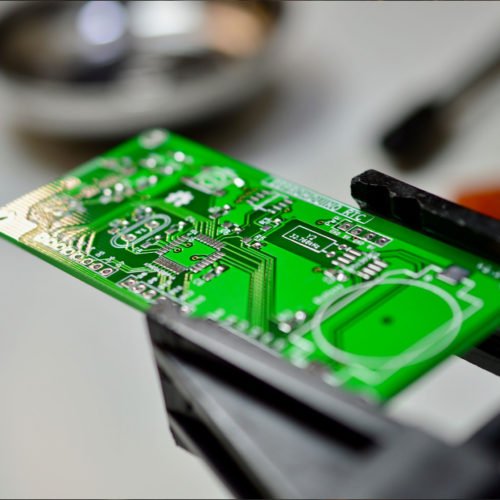PCBs can have up to two silkscreen layers. These are non-conductive text, markings, warnings and identification labels that can assist during assembly, test and installation.
Common uses of silkscreen are to indicate the polarity of components such as diodes and capacitors, indicate the pin 1 reference on ICs, identify test points, show the PCB part and revision number, provide warning symbols for high-voltage, ESD care, and to label each terminal on a connector that is manually wired to the board.


